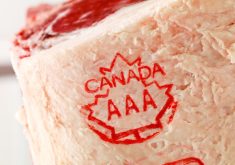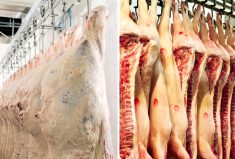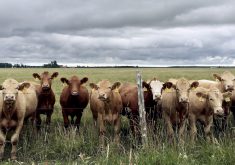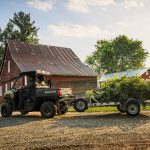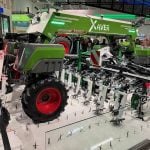Manufacturers of agriculture equipment are expressing relief as steel and aluminum tariffs between Canada and the U.S. were withdrawn.
The Canadian, U.S. and Mexican governments came to agreement May 17 to drop the tariffs which had been in place for almost a year, driven by U.S. President Donald Trump’s attempt to force agreement to a new North American trade agreement by using tariffs.
Read Also

Canada seventh-most influential country on agri-food
Report from Dalhousie University and MNP shows Canada ranks seventh among G20 countries on agri-food influence.
Why it matters: The tariffs have made imports of steel and equipment and exports of finished products more expensive for the past year they have been applied. The tariffs have also made it more expensive for farmers trying to buy equipment, especially from the U.S.
“It was a lean year” for Canadian makers of farm equipment, says Steve McCabe, executive director of the Agricultural Manufacturers of Canada (AMC).
Manufacturers had the tariffs “eat right into their bottom line,” says McCabe. Some companies continued to carry larger overhead in the belief that the tariffs wouldn’t last. Others had to slow down operations, reduce employee numbers or not hire.
The tariffs created the odd situation where manufacturers could import components of steel without tariff, but then the finished products couldn’t be sold outside of the country without tariffs.
Much of the equipment built by Canadian manufacturers is exported. Some of it goes outside of North America, but for many members of AMC, the largest market is the United States.
“This stalled a lot of people,” in agriculture manufacturing. “It stopped them dead in their tracks,” says McCabe.
He said he didn’t know when the effect of the dropping of the tariffs would filter down to farm-level pricing, but he expected manufacturers would be hearing from their customers.
The tariffs were the main topic of conversation for McCabe when he met with federal cabinet ministers, but they are not the only challenge for farm equipment makers. Crop prices are down, at least partly due to the current trade war between the United States and China into which Canada has been pulled. That means farmers are not as likely to purchase new equipment.
The fact that China is now not buying Canadian canola has meant Western Canadian farmers have also pulled back in their purchase of equipment, says McCabe.
The tariffs rankled many in Canada because Trump used provisions that declared imports of steel and aluminum from Canada a national security issue, despite Canada’s steadfast support of the U.S. on security issues.
“This decision reflects what is known to be true by friends on both sides of the border: Canada has been America’s most steadfast ally for more than 100 years, and our long-standing partnership and closely linked economies make us more competitive around the world and improve our combined security,” said Prime Minsiter Justin Trudeau as the tariffs were lifted.
The lifting of the tariffs is expected to help speed passage of the new Canada-U.S.-Mexico Agreement on trade agreed to in late 2018 by the three countries.
McCabe says having Mexico also applying pressure on the United States on the tariffs helped Canada convince the U.S. to lift them.
“It was good to have someone on our side fighting the same battle for sure,” he says.






